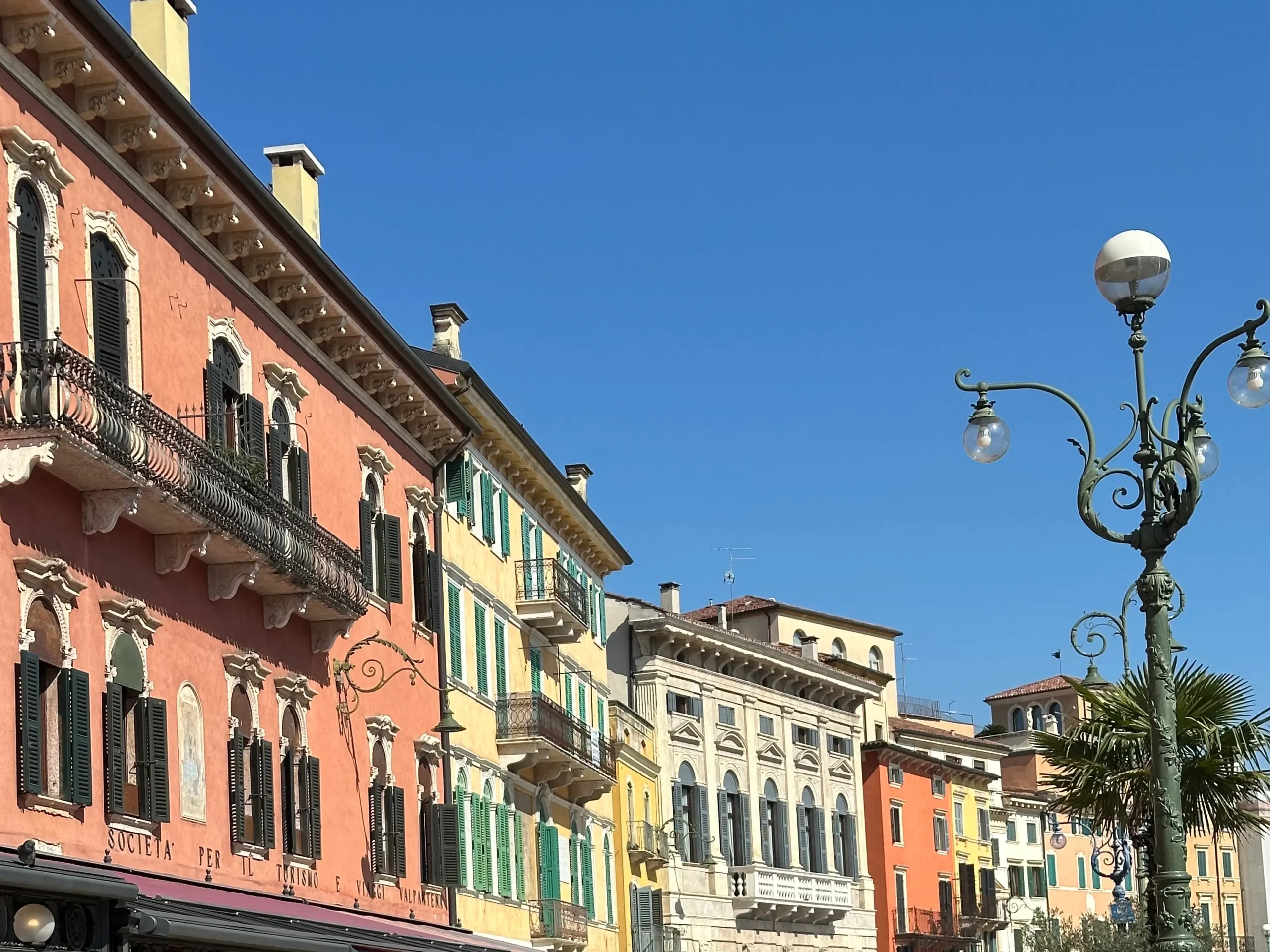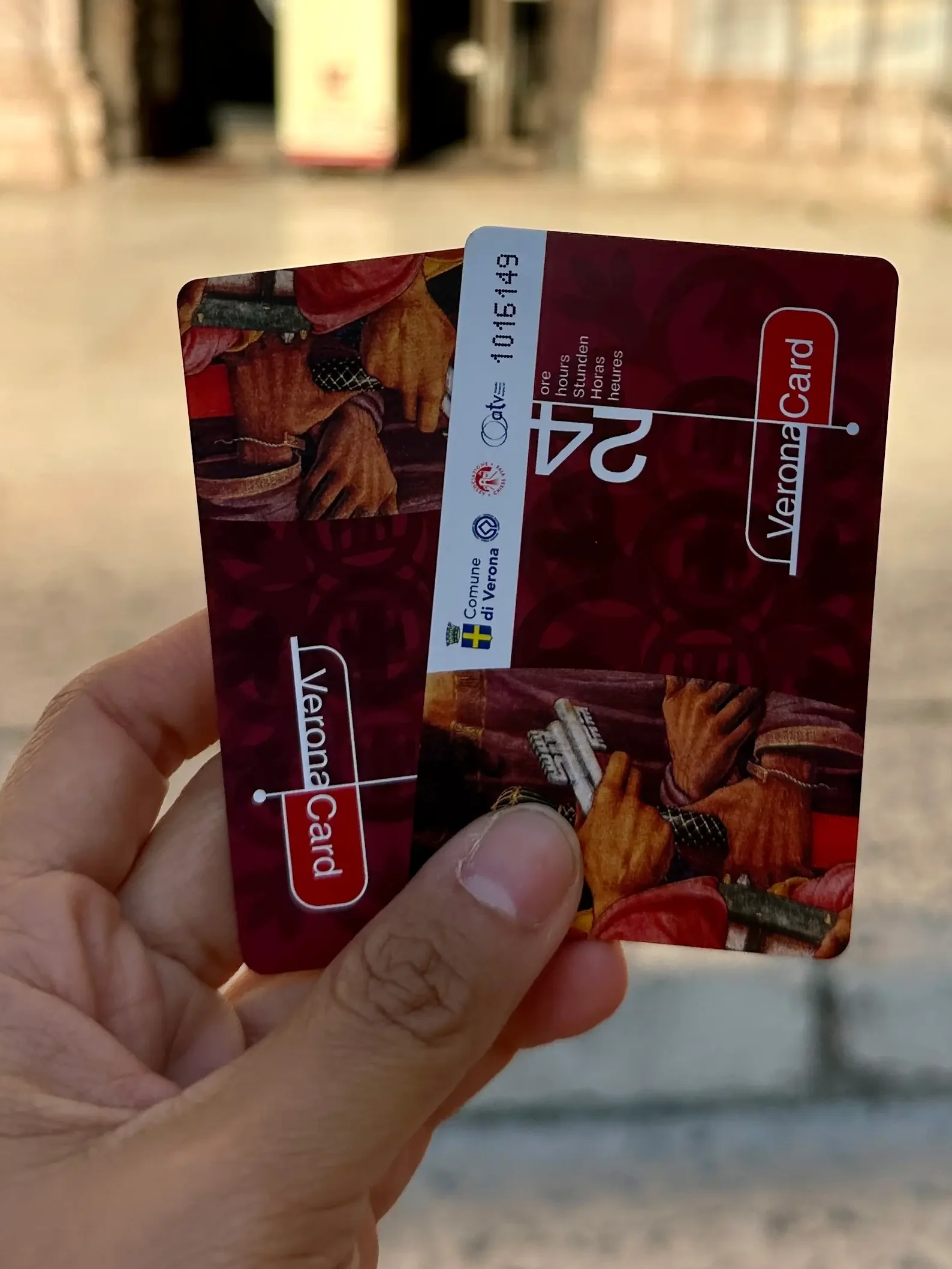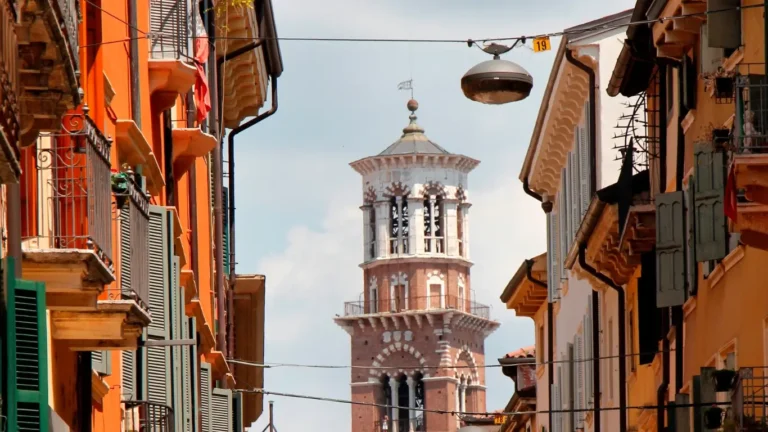One Day In Verona: A Perfect Itinerary For First-Timers
If you only have one day in Verona, don’t worry—you can still enjoy the city’s charm and historic highlights without rushing. This itinerary shows you exactly how to spend 24 hours in Verona, Italy.
When I first stepped into Verona, I wasn’t expecting to fall in love. It was supposed to be a stopover on our six-day road trip through Northern Italy. But within hours, the city had me hooked.
With its cobbled streets, Roman ruins, and the soft pink glow of ancient buildings, I felt like I was finally experiencing the Italy I’d always imagined.
Whether you’re visiting as a day trip from Venice or Milan, passing through by train, or squeezing in a quick day trip, this one day in Verona itinerary gives you a smooth, walkable route through the must-sees—with room for pizza, gelato, photos, and a little magic.
I followed this exact path myself, and it’s one of the few times a “perfect day” actually lived up to the name.
You’ll also find tips for where to eat, how to skip the line at Arena and Juliet’s Balcony, and where to catch those breathtaking city views for free—so you can plan smarter, enjoy more, and maybe fall in love with Verona too.
verona card
If you’re planning to visit multiple attractions, I highly recommend getting the Verona Card.
It gives you free or priority access to major sites like the Arena di Verona and Juliet’s House, and it can save you both time and money.
I saved $20 during my visit to Verona just on the attractions I really wanted to see!
One Day in Verona Itinerary
1. Pick Up Your Verona Card
Start your day at the Tourist Information Office on Via Leoncino 61.
As of 2025, even if you book online, you’ll still need to exchange your voucher for a physical Verona Card at this office. I recommend booking through GetYourGuide or Tiqets—there’s a separate pick-up line for online reservations, which helps you save time.
We parked at Parcheggio Interrato Cittadella, which cost €22 for the entire day. It’s about a 6-minute walk from the Tourist Information Office—super convenient if you’re arriving by car.
2. Arena di Verona
There’s no better place to start than the Arena di Verona—one of the best-preserved Roman amphitheaters in the world. It’s even older than the Colosseum in Rome and still hosts concerts and opera performances today.
While the lines here are generally shorter than in Rome, you should still expect a bit of a wait—around 10–20 minutes in the off-season (November to March) and 30 minutes to an hour during peak season (April to October).
That’s exactly why this itinerary starts here. Head over early—ideally right at opening time, 9:00 AM—to enjoy the Arena before the tour groups roll in.
If you have the Verona Card, you can skip the regular line and enter through Gate 5 for fast-track access. Honestly, this perk alone makes the card worth it. When we visited in March, we walked straight in—no queue at all.
Once inside, take your time. Walk slowly. Sit on the stone benches. Feel the scale, the silence, the weight of everything this arena has witnessed.
For a deeper experience, join this 45-minute guided tour. The stories, the hidden details, the way the guide paints the past—it adds a whole new layer of meaning to what you’re seeing.
Pro Tip: The Arena is closed on Mondays, and during the summer opera season (June to September), last entry is at 4:30 PM due to scheduled performances.
And speaking of performances… if there’s one thing I’d change about our visit, it’s the timing. I wish we had come in June, just to experience an opera here.
Opera at the Arena di verona
If you’re visiting Verona between June and September, watching an opera at the Arena di Verona is an experience you simply shouldn’t miss.
You’ll witness world-class performances like Aida and La Traviata under the stars, in a 2,000-year-old Roman amphitheater—the very place where gladiators once fought.
It’s not just a concert—it’s a bucket list experience. I still get chills just imagining what it would’ve felt like to sit there, surrounded by stars and history. If I could do it over, I’d plan my entire trip around this night.
3. Piazza Brà
Once you’re out of the Arena, take a moment to slow down in Piazza Brà. This grand square is lined with cafes, statues, and pastel buildings. It’s lively but not chaotic.
Take your time here. This (and the next piazzas (plazas)) are the reasons I fell in love with Verona. It surpassed my expectation of Italy.
Walk around. Check the statues, the pastel buldings, the street performers singing in the background. You can grab a coffee or an aperitivo here if you’d like—but just a heads up: cafés in popular squares like this tend to be pricier and less authentic.
If you’re not too hungry yet, I suggest holding out for lunch at an osteria—a casual Italian restaurant where locals go for traditional dishes and house wine.
Or, if you’re in the mood for some of the best pizza and gelato you’ll ever have in Italy, don’t worry—we’re about to get that in the next piazza.

4. Castelvecchio Museum & Scaliger Bridge
From Piazza Brà, walk over to Castelvecchio — a medieval fortress turned museum that now houses a collection of sculptures, paintings, weapons, and ancient artifacts from Verona’s past.
Honestly, the art is cool, but what really stood out to me were the views. You can walk along the castle walls and look out over the river—it’s quiet, scenic, and makes you feel like you’ve stepped back in time. And just outside is Scaliger Bridge (Ponte Scaligero), one of the most photogenic spots in the city.
Even if you’re not into museums, the bridge alone is worth the stop. That walk across, with the Adige River flowing beneath you and castle walls on both sides? Chef’s kiss.
I’d set aside at least an hour here. The museum is big enough to explore but not so huge that it feels overwhelming. Plus, it’s never as crowded as the Arena, which makes the whole experience more relaxed and enjoyable.


5. piazza delle erbe, pizza & gelato
By now, you’re probably getting hungry. Head toward Piazza delle Erbe, Verona’s oldest and most beautiful plaza.
Here, grab a slice from Cruncheria (trust me—it was some of the best pizza I had in Italy). I’m not even a pizza person, but my partner, Mat, is. He even makes his own pizza at home, and this one made it into his top favorites. It’s crunchy, savory, light, and incredibly fresh.
Then take a few steps to Gelateria Impero and order the salted pistachio. Saying I love ice cream is an understatement. I eat ice cream in almost every country I visit—and on our six-day road trip through Italy, I had it every single day. I mean… we were in Italy.
And this gelato? Easily in my top 3—in Italy and in the world.
It’s easy to find a spot around the piazza to sit down and enjoy your treats. I even accidentally sat on the base of Dante’s statue without realizing it. I was literally looking around for it when I noticed… I was already sitting right next to him.


6. Torre dei Lamberti
From there, make your way to Torre dei Lamberti, Verona’s tallest tower at 84 meters. You can take the elevator up (you’ll need to pay a 1 euro even with the Verona Card) or brave the stairs—which are included for free with the card.
The 360-degree views at the top are nice. You can spot the Arena, Castelvecchio, and even the green hills in the distance. But heads up: there’s a clear barrier at the top which slightly obstructs the view, especially for photos. If you’re short on time or feeling tired, I’d say this is one you can skip without FOMO.
Between you and me? I liked the view from Castel San Pietro much better.
Make sure to reserve a time slot in advance if you’re visiting during high season.


7. Piazza dei Signori & Scaliger Tombs
Just a few steps away is Piazza dei Signori, often called Verona’s “living room.” It’s elegant, quiet, and filled with history—and personally, I found it to be the most authentic-feeling plaza in the city.
Right in the middle is a statue of Dante Alighieri, who lived here after being exiled from Florence. Locals say the piazza reflects a more intellectual and dignified side of Verona, compared to the busy energy of Piazza Brà.
Next to it, you’ll see the Scaliger Tombs, built for the Della Scala family who ruled Verona in the 13th and 14th centuries. These Gothic-style monuments are elaborate and full of fascinating detail. Even if the gates are closed (off-season), you can still peek through and admire them.
Scaliger Tombs Opening hours (April 11 – September 30, 2025):
Friday to Sunday: 10:00 AM – 1:00 PM / 2:00 PM – 6:00 PM
Closed on December 25
Tickets aren’t available on-site. Arrive here with your Verona Card
8. Juliet’s House
A short walk from Piazza dei Signori and you’re at Casa di Giulietta. Yes, it’s touristy. But honestly? It has its charm.
Standing in that tiny courtyard, looking up at Juliet’s balcony, rubbing the statue for luck (yes, the right breast is the one!) — it’s all part of the experience.
With the Verona Card, entry is free, but you still need to reserve a time slot online.
Inside the museum, you’ll find a reimagined version of Juliet’s bedroom, Renaissance paintings, and even a little letter-writing corner where you can leave a note to Juliet. But the best part? That balcony moment. Especially if someone you love is standing below, camera ready.

9. Basilica of Sant’Anastasia
Next up is Basilica di Sant’Anastasia — the largest church in Verona, and in my opinion, the most beautiful.
It’s filled with frescoes, soaring columns, and incredible details that make you stop and just stare. Don’t miss the famous hunchback statues holding holy water at the entrance—a fun little detail with a legend behind it.
What made this visit extra special for me was the included audio guide (free with the Verona Card). It explained the stories behind the art and the architecture in a way that felt easy to follow but deeply enriching.
If you love churches or just want a quiet moment inside something truly grand, this one is worth every minute.
10. Ponte Pietra + Castel San Pietro
To wrap up your day, head toward Ponte Pietra — Verona’s oldest bridge. Cross the river, and from there, you can either hike or take the funicular up to Castel San Pietro.
The views from the top are unreal, especially at sunset. You’ll see Verona’s rooftops glowing gold, the Adige River snaking through the city, and the hills fading into soft pastel skies.
We walked up to the highest part, found a quiet spot on the old brick walls, and just sat there, taking it all in. It was the perfect, slow ending to a full day.
This is the perfect way to end your one day in Verona.

11. Dinner at Locanda 4 Cuochi
If you’re ending your day with a bit of energy left—and your stomach’s starting to growl—Locanda 4 Cuochi is a perfect spot for dinner and drinks.
This cozy yet modern osteria is run by four chefs (hence the name), and it’s become one of Verona’s best-rated restaurants for good reason. The menu changes seasonally and mixes traditional Veronese flavors with creative twists. Think handmade pastas, rich sauces, and some of the best wine pairings we had on the trip.
What really stood out to me? Their signature carbonara with truffle. If you’re starting to lose steam by this point in the day, just remember: this dish alone is worth the walk.
It’s about an 18-minute walk from Castel San Pietro back toward the center—on the way if you’re heading to Piazza Brà or to your car at Parcheggio Interrato Cittadella. It’s a perfect place to slow down, sip a glass of wine, and reflect on everything you saw.
Just make sure to book a reservation in advance—it’s a local favorite and fills up quickly.
Map of This Itinerary
🤩 Want to follow this exact route? When you buy the Verona Card through our site, you’ll get my free Google Map and printable itinerary—complete with the walking path, food stops, and opening hours, all ready to use on your phone.
Should You Get the Verona Card for 1 Day?
Absolutely. If you’re following this itinerary, you’ll be visiting at least 4–5 attractions that normally cost €6–€12 each. The 24-hour Verona Card currently costs €27 and includes:
- Free entry to Arena di Verona, Juliet’s House, Torre dei Lamberti, Sant’Anastasia, and more
- Priority access at several sites
- Free city bus rides
Here’s what I visited in one day:
| Attraction | Regular Price |
|---|---|
| Arena di Verona | €12 |
| Castelvecchio Museum | €9 |
| Torre dei Lamberti | €6 |
| Juliet’s House | €12 |
| Church Sant’Anastasia | €4 |
| Verona Cathedral | €4 |
Total without Verona Card: €47
Verona Card (24hr): €27
In total, we saved over €20 with the card.
verona card
If you’re planning to visit multiple attractions, I highly recommend getting the Verona Card.
It gives you free or priority access to major sites like the Arena di Verona and Juliet’s House, and it can save you both time and money.
I saved $20 during my visit to Verona just on the attractions I really wanted to see!
PRO Tips for Your Day in Verona
How to Get There
- From Venice or Milan: Direct train takes ~1.5 hours
- From Lake Garda: Buses and trains are frequent from Peschiera or Desenzano
- From Bologna: ~1 hour by high-speed train
- From Bergamo: ~ 1 hour 30 minutes by car
Best Time to Visit:
- Spring and early fall (April, May, September) offer great weather and fewer crowds
- Weekdays are quieter than weekends
Luggage Storage:
- Available at Verona Porta Nuova station
What to Wear:
- Comfortable shoes (you’ll be walking a lot!)
- A refillable water bottle (public fountains are available)
Other Tips:
- Book Juliet’s House and Torre dei Lamberti in advance (especially in high season)
- Grab aperitivo near Piazza Brà or along the river
FAQ: One Day in Verona
What is Verona, Italy famous for?
Verona is best known as the setting of Shakespeare’s Romeo and Juliet—but it’s so much more than just Juliet’s balcony.
The city is famous for its Roman amphitheater (Arena di Verona), romantic piazzas, and timeless charm. Plus, if you’re visiting in summer, the opera in the Arena is a once-in-a-lifetime experience.
Is Juliet House in Verona real?
Yes… and no. Casa di Giulietta is a real 14th-century house in Verona, but the connection to Juliet is more symbolic than factual. Shakespeare’s story is fiction, and the balcony was added later to match the romance of the tale.
The experience still feels magical—especially if you’re traveling with someone you love (or hoping to manifest that energy).
Is Verona cheap or expensive?
Verona is more affordable than Venice or Florence, but it’s not a total budget destination either. Entrance fees for attractions range from €5–€12, and mid-range meals cost around €15–€25 per person.
If you’re planning to visit multiple sights, the Verona Card is a no-brainer—it saved us around €20 in one day.
Is Verona walkable?
Absolutely. Verona is one of the most walkable cities I’ve ever visited. You can reach all the main sights—from the Arena to Juliet’s House, the bridges, and the viewpoints—on foot. The old town is compact, flat, and perfect for wandering without needing public transport. But make sure to wear comfortable shoes.
Where can I get the best view of Verona?
Hands down, the best view is from Castel San Pietro, especially at sunset. You’ll see the rooftops glow, the Adige River curve through the city, and the whole skyline light up.
Can you do Verona and Lake Garda in one day?
Technically, yes. But I wouldn’t recommend it if you want to truly enjoy both. They each deserve at least a full day.
If you’re short on time, you could do Verona in the morning and head to Sirmione (Lake Garda’s most famous town) for an afternoon swim and sunset by the lake.
Is One Day in Verona Enough?
One day in Verona goes fast, but it’s more than enough to fall in love. I did.
You won’t see everything, but that’s okay. The charm of a day in Verona Italy is in its details—the alley you didn’t expect, the couple dancing in a square, the scent of fresh basil from someone’s kitchen window.
If you have time, stay longer. But if you only have 1 day in Verona, this itinerary will help you make the most of it.
🤩 Want to make the most of your day in Verona?
If you buy the Verona Card through this link, I’ll send you my free Google Map and printable itinerary—so you’ll know exactly where to go, what to eat, and how to enjoy the city without overthinking it.
It’s the guide I wish I had on my first visit—and I’d love for you to have it.



